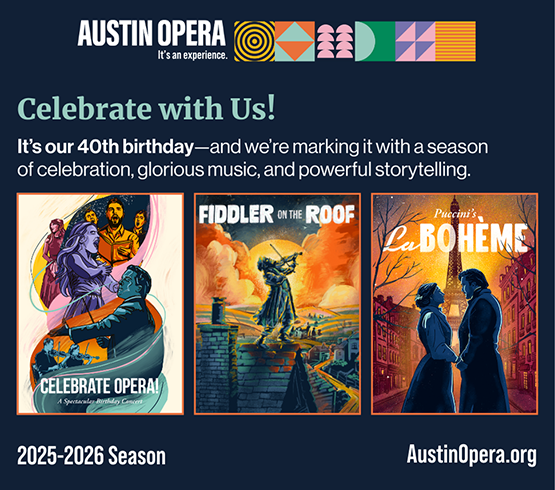The pandemic forced PrintHouston to sit out 2021. Now that the virus is largely under control, the city’s biennial celebration of the printmaking art isn’t waiting for another odd-numbered year to roll around.
“These galleries want to show off what people haven’t seen before,” says Andis Applewhite, president of PrintMatters, the nonprofit that mounts PrintHouston. “That’s the whole point—to bring in print artists that we don’t see all the time.”
Pride of place goes to PrintHouston’s guest artist, which this year is actually an organization: the Tamarind Institute, a trailblazing lithography center in Albuquerque. Before its opening in 1960, fine art lithography was threatening to fade away in the United States. But founder June Wayne and the institute launched a renaissance by training master printers in specialized skills, inviting artists for lengthy collaborations and showcasing the results.
“She kept lithography alive,” Applewhite says. The institute’s director, Diana Gaston, will launch PrintHouston with a keynote address June 3, and the focus will stay on Tamarind during events the next day.
The MFAH show offers several works by the Venezuelan artist Gertrud Goldschmidt, known as Gego. In her lithograph Black (Tamarind 963), narrow strips of color undulate, creating the illusion of three dimensions. The museum’s label notes a dialogue between that and works in actual three dimensions hanging upstairs—such as Gego’s sculpture Vibration in Black.
Ellen Lesperance’s Final Path of the Feminye comes from the Oregon artist’s Tamarind Institute residency of 2020. Part of a series that takes female activists’ garments as a jumping-off point, the rainbow-colored image consists of tiny points of color that suggest the weave of a fabric. They add up to the shape of a double-sided ax that, as the label notes, symbolizes feminism. The McClain Gallery will give Lesperance her own show (June 4-July 16) during PrintHouston.
Among other PrintHouston venues, Foltz Fine Art will spotlight Susu Meyer (June 4-July 2). Her monoprints deal with “randomness and imperfection, which she hopes will challenge the viewer to use one’s senses to feel and learn to ‘see’ in another way,” the gallery’s announcement says. The Moody Gallery will feature Jay Shinn, whose show (June 4-July 2) will include lithographs he made in Berlin using exposure to neon light.

1 ⁄7
Stephanie Mercado, Flourish (for Maggie) 2020 lithograph; ed. 18 p.s. 30 x 22”
Published by Tamarind Institute of Lithography
Master Printer: Maggie Middleton

2 ⁄7
Jay Shinn, Paradise Central, 2019 six color lithograph created with neon light, ed: A/P 1/2 (ed: 10) 27 1/2" x 27 1/2"
Courtesy of the Artist and Moody Gallery, Houston, Texas.

3 ⁄7
Cathie Kayser, You lift me, I lift you (detail), Monotype, graphite, and embossing

4 ⁄7
John Slaby, Kill the Buddha, etching and aquatint 4x4.5

5 ⁄7
Susu Meyer, Untitled, 2022, monoprint, 24x24 in. Photo courtesy of the artist.

6 ⁄7
Donna Perkins, Butterfly, 2021, Monotype (Acrylic on Yupo), 12 x 18"

7 ⁄7
Tokie Taylor, All shut eyes ain't sleep, 13"x 19", 1/10 variable edition, Cyanotype on cotton rag paper, 2022
PrintMatters’ Applewhite anticipates such shows in much the same way any art lover might. “I don’t know Stephanie Mercado and her work, so I’ll be looking forward to seeing what Hooks-Epstein shows of hers,” she says.
Both PrintMatters and PrintHouston aim to promote printmaking and educate viewers about it—beginning with the fact that “printmaking is an art form in itself. It’s not a reproduction process,” Applewhite says. Within a single edition of a print, she adds, each impression varies a bit from the rest.
“Each print is an original piece of art. It’s done in a different time space, and it’s done with a different pressure….I know collectors who will want to look through an edition and pick the number they want. No. 1 may be different from No. 3 or No. 6.”
“When I first got into printmaking … I wasn’t that collaborative. I was more alone in the studio,” Applewhite recalls. “Then Cathie Kayser said, ‘Let’s form this group.’ I’ve grown to love this community of printmakers. They’re very supportive. They’re willing to help printmaking thrive.”
-STEVEN BROWN




